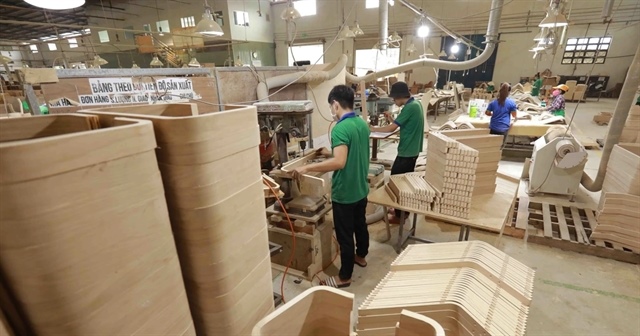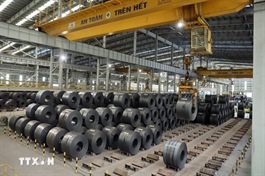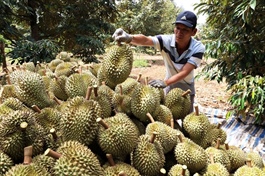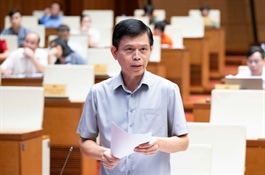Việt Nam’s wood exporters advised to navigate pressures as new tariffs come into effect
Việt Nam’s wood exporters advised to navigate pressures as new tariffs come into effect
The wood industry in Việt Nam is facing pressure to quickly modify its strategy in order to maintain growth, especially after the US formally imposed duties on a number of Vietnamese exports, including processed wood and timber products.

Production of curved plywood for export at Nhật Nam Plywood Co., Ltd.’s factory in Bến Cát Ward, HCM City. — VNA/VNS Photo |
The Handicraft and Wood Industry Association of HCM City (HAWA) reported that on September 25, US President Donald Trump announced tariffs of up to 50 per cent on kitchen cabinets, bathroom cabinets and certain types of furniture, which will officially take effect on October 1.
Given that the US is its key market, this presents a significant problem for wooden furniture businesses. As a result, wood processing and exporting businesses have been fast to set a new direction for the industry as a whole.
Currently, Canada has emerged as a promising alternative market, with Việt Nam ranking among its top three wood suppliers. According to the Vietnam Timber and Forest Products Association, the main items that Canada imports from Việt Nam are bedroom furniture, dining room furniture, and wooden-frame chairs.
With a market share of over 35 per cent, bedroom furniture is very popular among Canadian customers.
Stringent safety, durability, and fire resistance standards, such as those established by CSA Group, UL, and ANSI/BIFMA, must be closely adhered to in order to maintain product competitiveness, according to HAWA.
According to industry experts, Việt Nam and Canada are under the Comprehensive and Progressive Agreement for Trans-Pacific Partnership (CPTPP), which gives substantial tariff advantages that help Vietnamese companies cut costs and become more competitive with their competitors.
Companies are also advised by the Ministry of Industry and Trade's Agency of Foreign Trade to focus on products certified by the Forest Stewardship Council (FSC), as this meets sustainability standards that are significant to Canadian customers.
According to Trần Quang Bảo, director of the Forestry Department, to win over global consumers, Vietnamese wood exporters are investing in modern, minimalist and eco-friendly designs.
Canada itself is a major timber producer, with annual output of around 600 million cubic metres, yet its furniture industry meets only half of domestic demand. This reliance on imports, particularly competitively priced items, positions Việt Nam as a key supplier to bridge the gap.
Phùng Quốc Mẫn, chairman of the Handicraft and Wood Industry Association of HCM City (HAWA), said that in the first eight months of 2025, Việt Nam’s wood and wood product exports reached US$11.1 billion, up 6.5 per cent against the same period in 2024.
The outlook for the remaining months of 2025 suggests that Việt Nam’s timber industry will face mounting challenges in export markets. Mẫn urged enterprises to make full use of free trade agreements, enhance design capacity, and expand online sales channels.
HAWA has therefore recommended that businesses not only diversify into new markets to sustain growth targets set earlier this year, but also give greater attention to the domestic market to ensure long-term development.
Nguyễn Cẩm Trang, deputy director of the Import-Export Department, noted that the Ministry of Industry and Trade is continuing technical-level negotiations, particularly on trans-shipment issues.
The US has so far not provided any definition or guidance on this matter, she said, adding that these need to be clarified so that businesses can decide on their next strategies. In the meantime, Vietnamese businesses are encouraged to leverage free trade agreements and broaden export outlets to maintain growth momentum.
- 07:48 03/10/2025






















